Marlene Epp teaches History and Peace & Conflict Studies and is director of Mennonite Studies at Conrad Grebel University College at the University of Waterloo.Among other things, she teaches a course on “Food, Culture, and History.” This article is based on a talk at the 37th annual Kitchener-Waterloo Inter-faith Community Prayer Breakfast, May 9, 2012.
My partner Paul and I were vacationing in Mexico with friends in February and one afternoon, after a morning of whale-watching in the Bay of Banderas at Puerto Vallarta, we stopped at a Walmart to pick up some groceries.
Wandering through the cheese section, I found, not completely to my surprise, a large display of queso menonita—Mennonite cheese. I was not completely surprised because I knew that Mennonite cheese was a popular national foodstuff in Mexico, prized for its soft texture and mild flavour. Ironically, the production of Mennonite cheese in Mexico began when a group of conservative Mennonites in Manitoba chose to leave Canada in 1922 because they wished to remove themselves from a modernizing culture and establish separated communities in a country that more or less left them alone to live out their religious beliefs. Over the past 90 years, their cheese has become renowned in the country.
Here we see food, faith and culture intersect in interesting and perhaps odd ways. A group of people with distinct cultural characteristics and religious beliefs become known for a particular foodstuff that they produce; it is sold at a popular tourist destination, where spirituality is mostly at low tide, and by a corporate giant, Walmart—often critiqued for its “unjust” economic practices and for globalizing western consumerism in a manner viewed as unethical by some.
My mind was momentarily dizzy with the intersection of ideas and images here. For me, that queso menonita was not “just food” that would be tasty melted on a black bean burrito. It represented the faith-based migration and sojourn of a particular people that I consider my “denominational cousins”; it represented a symbol of their cultural and economic success in a context where they are often vilified for their isolation and church-based legalism. Its presence on this occasion in a Walmart at Puerto Vallarta, and priced higher than most other cheeses, made me wonder whether most Mexicans could even afford queso menonita.
The phrase “just” food was introduced to me in a travelling art exhibit that was in Waterloo last year in which 13 visual artists from around the world reflected, in their artwork, on the question of food “justice” and the right to food, framed in a human rights context. Sponsored by the Mennonite Committee on Human Rights and curated by Winnipeg artist Ray Dirks, the exhibit prompted a whole range of questions that begged a faith-based response to global hunger.
But another way to think of the phrase is to ask, are we eating “only” food? The short answer here is no. When we eat certain foods at specific times and for particular reasons, we know that food is imbued with cultural and religious meaning. The famous phrase “you are what you eat” or, as one author turned it around, “you eat what you are” says a great deal about the linkages between our self-identity and the food we consume.
More than ‘Just food’ when we eat mindfully
We are probably all familiar with current ideas about “mindful” eating—although it is first of all interesting to think about the fact that we can engage in the luxury of mindful eating in a way that was different for our ancestors who spent the better part of their waking hours in food production and preparation. And also different for the many people around the world today who are “mindful” every minute of the day about the source for their next meal. Today, mindful eating, and “just” eating, emerges in multiple concerns that we have about our food.
Spiking food prices combined with depleting food resources (or the inequitable division of those resources), has fuelled our anxieties about a “hungry planet.” We have been alarmed by exposés about the impact of “fast food” diets, a spreading epidemic in obesity, and the increase in related diseases like diabetes. Our fears have increased about e-coli-tainted produce, meat and water; listeria; mad cow disease; and other outbreaks. In Canada as elsewhere, we have witnessed protests against genetically modified foods, pesticide-drenched foods, human-made famines, and the use of food for biofuels.
In response to these fears and uncertainties, many people, households and communities have become food activists. So-called “ethical eating” has led to a growing popularity in vegetarianism (and all its variants) and to the adoption of other food practices as eating local, urban and community-supported agriculture, organic eating, and the slow foods movement. For many people, this is grounded in spiritual beliefs about caring for the planet and God’s will that no one go hungry.
My guess is that we have all thought about these issues, and some of us have acted on them, with varying degrees of success. Indeed, I am one of those whose kitchen counter features Martin’s Ambrosia apples bought in February at Bailey’s Local Foods, cosying up to Dole bananas from Central America bought at Sobeys grocery store. Topics like “food security” and “food sustainability” have become urgent agendas for experts and populists alike. Many people now call themselves “foodies”—people with a passion for eating, talking, and thinking about what we eat.
All of this is “mindful eating,” so that what we purchase and consume is not “just food.” But as one food scholar said, being overly mindful about one thing can lead to becoming mindless about another. So that our efforts to eat local, organic, and so on and our willingness to pay the costs of that, might make us less mindful of the food issues faced by others in the world.
And so food is not “just” food when we think about the disparities in the world today and acknowledge that there is no food justice when one out of six people in the world are malnourished. When Canadians spend perhaps 10-15 percent of their income on food, it may seem like “just” food; but certainly not so for Angolans or Tanzanians who spend up to 80 percent of their income on food.
Acknowledge food’s religious and cultural meaning
For anyone who is part of a faith community, we know that food is involved at some point, whether it is the community-building that happens at potluck meals, or the daily or seasonal religious rituals that are central to faith practise, or in the living out of beliefs through food charity. For faith groups that are also tied to particular cultural traditions, whether those are contemporary or ancestral, food holds extra meaning as a material and spiritual “thing” that ties us to our religious beliefs and our cultural identity.
In May I went to the annual spring roll fundraiser of the Grace Lao Mennonite Church in Kitchener. After purchasing 7 of the 700 dozen they would cook and sell that day, I went into the church basement where about 40 women, men, and youth were at long tables laughing and visiting while stuffing and rolling tasty pork and vegetables into rice paper wraps. The sale is at the heart of this congregation’s community life. Interestingly, the woman I sat beside who taught me to scoop up fiery papaya salad with balls of sticky rice (what they were eating for lunch), talked to me about how her religious identity and the food practices she followed were both Christian-Mennonite and Buddhist together.
Other recent food experiences reinforced for me the essential connection between faith and culture. After the horrific killings at a Sikh Gurdwara in Wisconsin in August, I went to a vigil at the local Gurdwara where several hundred people visited over a delicious meal in one area while prayer continued on the other side of the temple. I was impressed with the last-minute preparations that must have been involved, but was reminded that food hospitality is central to Sikhism, so that a free meal is served every week at the Gurdwara.
Just a week later, I was invited to Stirling Avenue Mennonite Church where the local Turkish Muslim community served the Iftar meal that signals the end of daily fasting during Ramadan. I delighted in the passion of the fellow sitting next to me, whose enthusiasm for the food we were eating (he had all the ingredients listed on his Blackberry) matched his eagerness to dispel myths and misconceptions about this central Muslim ritual. I learned a lot.
My own Christian Mennonite faith tradition, in its desire to simplify or indeed eliminate religious ritual altogether, does not have such faith-based food customs other than the twice-a-year communion service. Yet, in our human yearning to imbue our spiritual expression with everyday practices, and vice versa—to sanctify our daily routines—we have managed to connect certain moments in the Christian year with our cultural foodways. So that during the Christmas season, my mother makes peppernuts, a traditional German cookie. And at Easter, we eat paska, that egg-based sweet bread from eastern Europe that symbolizes the breaking of the Lenten fast (although we neither fast nor avoid much at all during Lent). But perhaps more importantly for Mennonites, it links us to the cultural and religious past of our parents and grandparents in Ukraine.
Other foods from my faith heritage have different meanings: zwieback, a small, two-levelled yeast bun, is a simple non-exotic foodstuff but one that holds great meaning for my Russian Mennonite ancestors. It was a food that was baked, double-baked and packed in large amounts as Mennonite refugees fled their homes in the 1920s and 1940s as the violence of first civil war and then World War II overtook them. Since it sustained them through tragedy, loss and fear, I think it took on symbolic religious meaning as it helped them maintain their hope in God. As long as there was zwieback, God existed. For Laotian Mennonites, the same is true about sticky rice, I’m told. And, after a recent visit to Africa to join Congolese Mennonites in their centennial celebrations, I think that perhaps foufou—their diet essential made from manioc and maize—has the same meaning.
The spiritual role of food during times of death and despair is, I suspect, in the histories of all faith communities. In Nazi concentration camps, Jewish women sustained themselves by talking about and exchanging recipes for their favourite foods. Discussing and sometimes arguing about the best methods of preparation for various delicacies was comforting to the women who were starving—they called this “mouth cooking.” Before she starved to death at Theresienstadt, Mina Pachter compiled a handwritten book of recipes—a cookbook—and entrusted it to a friend who survived and brought it to America.
Notably, it is on the role of food rituals and customs, and the importance of food charity and food hospitality, where much commonality exists between the world’s faith communities. It is often at the food table where inter-faith dialogue thrives. The significance of food is universal.
Food is where conflict occurs and peace prevails
We know that wars are fought over resources, including food. And that in the midst of war, food is often used as a weapon to slowly starve soldiers and civilians into submission. I think of the siege of Leningrad during the Second World War when the Nazi army surrounded and starved that city for close to 900 days so that people were resorting to drastic measures such as boiling and eating their fur coats, or licking the wallpaper for paste, or worse. The close-to-four-year-long siege of Sarajevo which began in 1992, saw the residents lose on average 30 pounds due to food shortages.
Food is often the cause of violent revolutions, such as the French Revolution. Remember Marie Antoinette’s comment about starving peasants who could not afford basic bread: “Let them eat cake,” she said. Food, in particular salt, was the issue that galvanized Gandhi’s movement for self-rule in India. Food is also a site of conflict between peoples of different cultures, ethnicities, and faiths. We stereotype and develop racist or “othering” ideas about people because of their foodways. Such as when we talk about the French as frogs, or the Germans as Krauts, for instance.
In Canada there is a history of racial stereotyping through food as each new group of immigrants arrived in Canada: in the 1950s it was the Italians as smelly garlic eaters; in the 1990s it was the South Asians as smelly curry eaters. A 1999 legal dispute between neighbouring Toronto households over the smells produced by a Chinese-Canadian family’s wok-cooking quickly became, in the media anyway, a clash of cultures over whose food was more “legitimate” or normal.
In more recent news, United States President Barack Obama was maligned for eating dog as a child in Indonesia, a choice of food which confirmed for some Americans, their racist notion that the President was indeed a Muslim and a foreigner.
But peace and reconciliation also happens when food is present, and food exchanges that lead to mutual respect and understanding are perhaps the most powerful examples of eating as more than “just food.” This happened in the Sikh and Muslim meals I mentioned earlier. It is true in neighbourhoods, often places of unplanned diversity and where disputes over basketball nets or property lines can be smoothed over by the sharing and exchange of food.
On my own small street, whose residents are of multiple faith and cultural backgrounds, it is when we gather over food that the unfamiliarity of different histories breaks down. So that the Christian, steaking-eating, multiple-generation Canadian enters into a conversation about food and thus a relationship with the Muslim Palestinian new-Canadian woman who has brought rose-water infused tea and pistachio baklava. The experience and memory of these food exchanges thus provides an entrée for conversations to come.
Such peacebuilding conversations happen around the downtown Toronto street-food cart of Marianne Moroney, who sells hot dogs and gives away care and compassion to the diverse assortment of people who frequent her cart. In particular, she works at encouraging attitudes of openness and acceptance amongst the “club” of children who are among her regulars, teaching them her trademark gesture—peace together forever. So now there is even a website, of a hot dog vendor, titled by that name: peace together forever.
Food, and the customs associated with it, provide powerful moments of civility and interruption to degrading wartime environments. I recently read Peace Meals: Candy-Wrapped Kalashnikovs and Other War Stories, by Soviet-born war journalist Anna Badkhen, who describes surprising moments of peace and humanity that occur in war-torn Afghanistan and Chechnya when food and drink is obtained and shared. She describes the food-based hospitality she received from Afghan families and warlords alike.
Food is never just food. It isn’t just food when we are mindful of the ethical impact of our food choices on our shared earth, with all its living things, and on people around the world. It isn’t just food when it is imbued with the tradition, hope, celebration, and charity of our spiritual lives. And it isn’t just food when it brings difference together and when it creates a space where peace can happen.
For discussion
1. What foods evoke memories of your childhood, your family or your church? If you have special foods for holidays such as Easter or Christmas, what role do they play in your life? How strong are your connections between food and culture or food and religion?
2. How important is “ethical eating?” What motivates vegetarians to avoid meat? What other foods do people avoid because of the ethical implications? To what extent does the food you purchase affect worldwide justice?
3. How can food help to build community? Why is eating together important? What role do potlucks play in your congregation? What role does food play in times of celebration or times of grief? Can a wedding or funeral be complete without food?
4. Do you agree with Marlene Epp that, “food holds extra meaning as a material and spiritual ‘thing’ that ties us to our religious beliefs and our cultural identity”? As our Mennonite Church becomes more culturally diverse, what does that mean for the future? How will the next generation respond to the idea of “Mennonite food”?


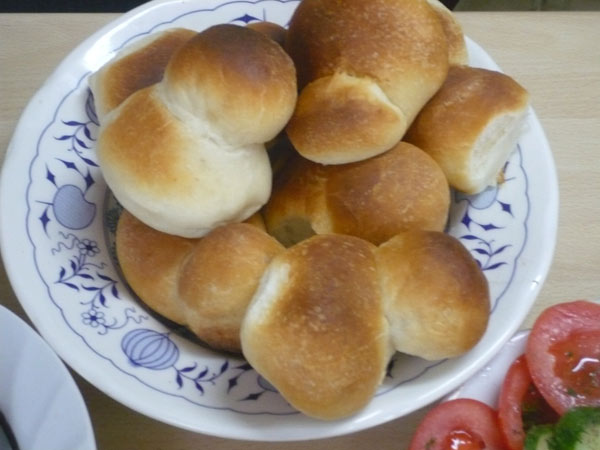

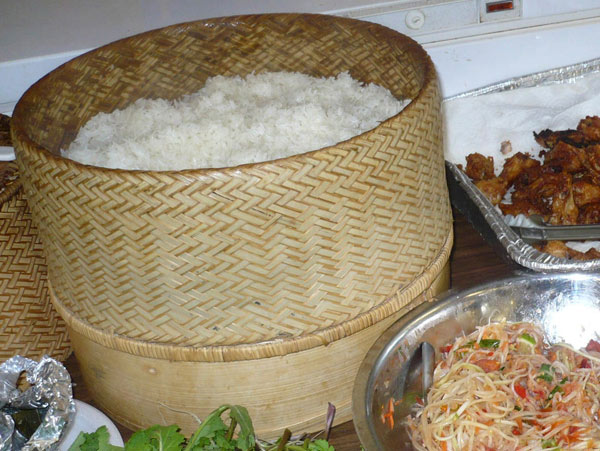
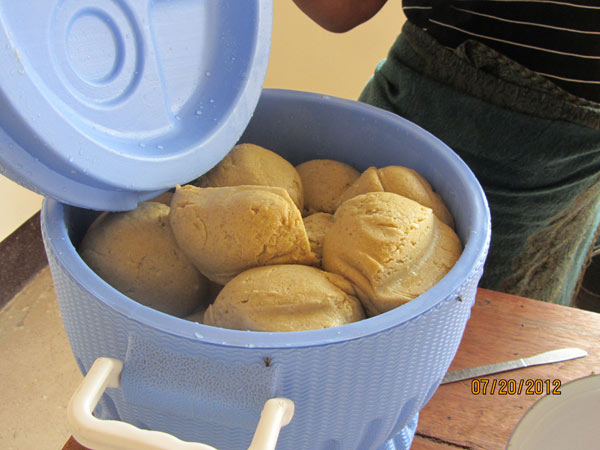
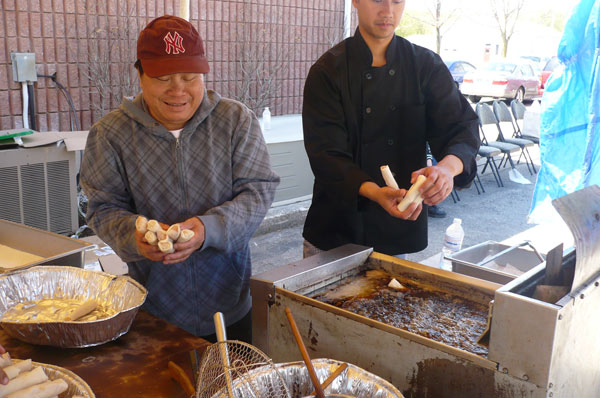
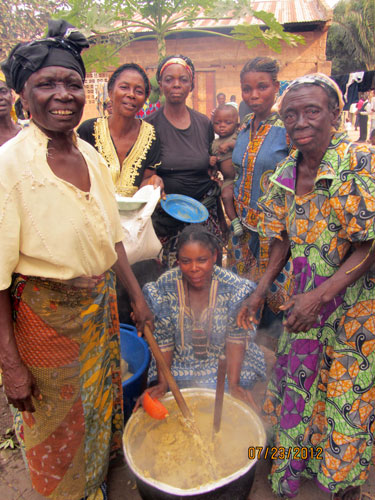




Leave a Reply
You must be logged in to post a comment.